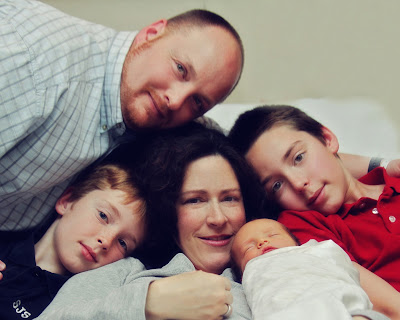Well this therapist/friend must have mentioned my blog to this mom as I know she had done time to time with other clients. I'm flattered that she does this and so grateful because it might be theraputic to unload your thoughts on "paper", but it's a whole nother level of therapy to have your thoughts acknowledged and appreciated by others*.
Because of my blog and Facebook posts, I got to know this mom a little here and there through her comments on those posts as well as private messaging on and off. However, over dinner, I came to find out last night she might be my number one fan, that she reads just about everything I write in my blog and on Austin's Facebook page, and that because of that she had shed tears during our trauma with Austin last year being caught up in our story and experiencing it right along with us. It was humbling to think a "stranger" could be so attached to Austin and me in that way.
But its not surprising, I guess. At least not with the many opportunities we have to share our stories on the internet and in so many formats. I've been caught up in other mom's stories and their kid's lives whether I've communicated with them or not, inspired by those mom's determination and dedication, amazed at their kid's incremental accomplishments, mourning over setbacks, occasionally envious of those mom's seeming ability to do this better than me, and shedding my own tears if their kid's life ended too soon.
And I think that's why this mom and I could meet up and go to dinner together last night as if we'd know each other forever. When we connect with someone who is going down a similar path, we speak their language and we both "get it". And to have unspoken permission to discuss openly our individual trials and grievances and confess our fears to someone who "gets it" can be like hitting a reset button. It reinforces the fact that we aren't alone, and we have a chance to remind each other what our purpose in life is right now, at this moment, in this life situation. We have a fleeting momentary mission that has been laid at our feet, that we don't have to feel trapped (as I've felt in the past), that we have a choice whether or not to accept and surrender to that purpose.
And that purpose is not to be their doctor, to diagnose causes or to medically explain this or that although we will continue to seek out the best and brightest just in case something is missed. That purpose is not to be their nurse or caregiver, to feed and diaper, to administer meds and clean their spaces and equipment although we will continue to fight for the most helpful equipment and the best medications that might ease their conditions. That purpose is not to be their therapist, to teach and train these frail frustrating little bodies to accomplish the smallest tasks even though we will exhaust ourselves researching and trying every new intervention and therapy that comes along, some beneficial and some not. That purpose is not to start a foundation on behalf of our kid's rare disease or diagnosis, or to sponsor events to raise awareness. That purpose is not to host a Facebook group to connect other special-need's mom's, or to start a blog or write a blog post that might help other mom's not feel alone. These can all be good and noble things that we do and can certainly keep us busy and distracted, but they are not our purpose.
Our purpose and mission in life is one we have in common with all moms, not just the special-needs kind. Our purpose, if we so choose, is to accept and surrender to this gift in front of us, to attempt to make a difference in this one life, this one soul, to make sure this one light feels divine, unconditional love. Right now, in this moment.
That's our purpose. That's our mission.
(Thank you, friend, for helping remind me of this last night! And don't be surprised if my next couple of blog posts aren't inspired by some of our discussion. Your acknowledgement that I seem somewhat at peace at this point on the journey has me analyzing how exactly did I finally get to this point of acceptance and surrender. And while I'll reserve the right to leave room just in case that changes (nothing is stagnant), it might be nice to document some of the things that helped me along the way, in case it can help someone else.)
------------
*I feel so lucky to live in this day and age of social media when you can hit "publish" and have our thoughts read and shared within minutes or hours. I think of the "good ole' days" when we might write in our diary or journal and its not until we're dead that someone accidentally discovers our thoughts on life situations or our stories. These days we have a chance to share those thoughts and stories with the world at our leisure for better or worse, hopefully for better, I suppose. So remember, Sharing Is Caring!










